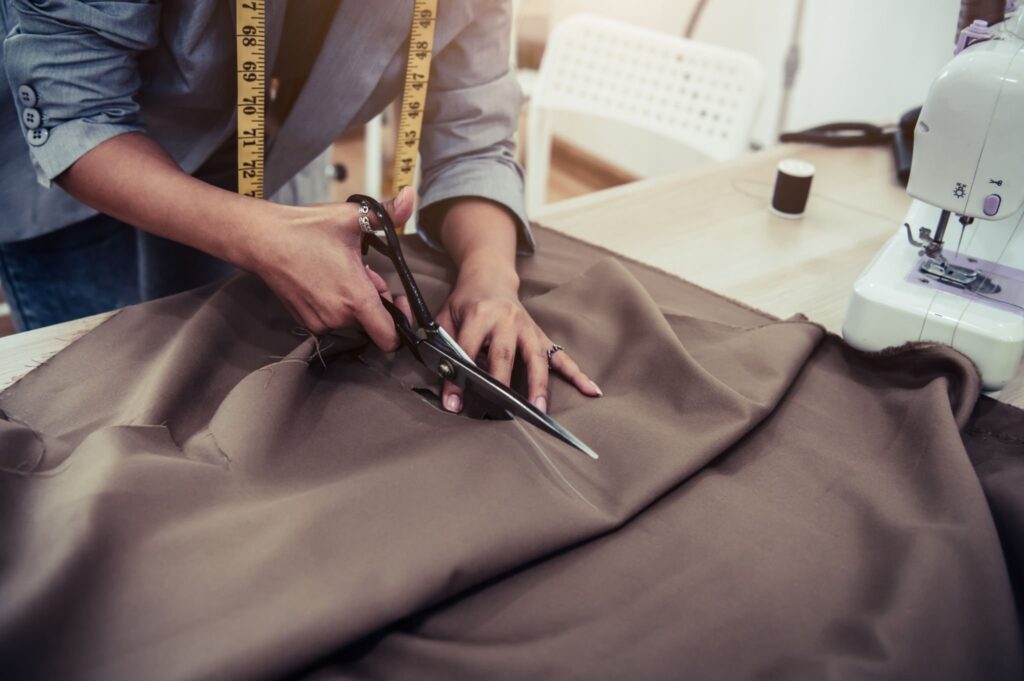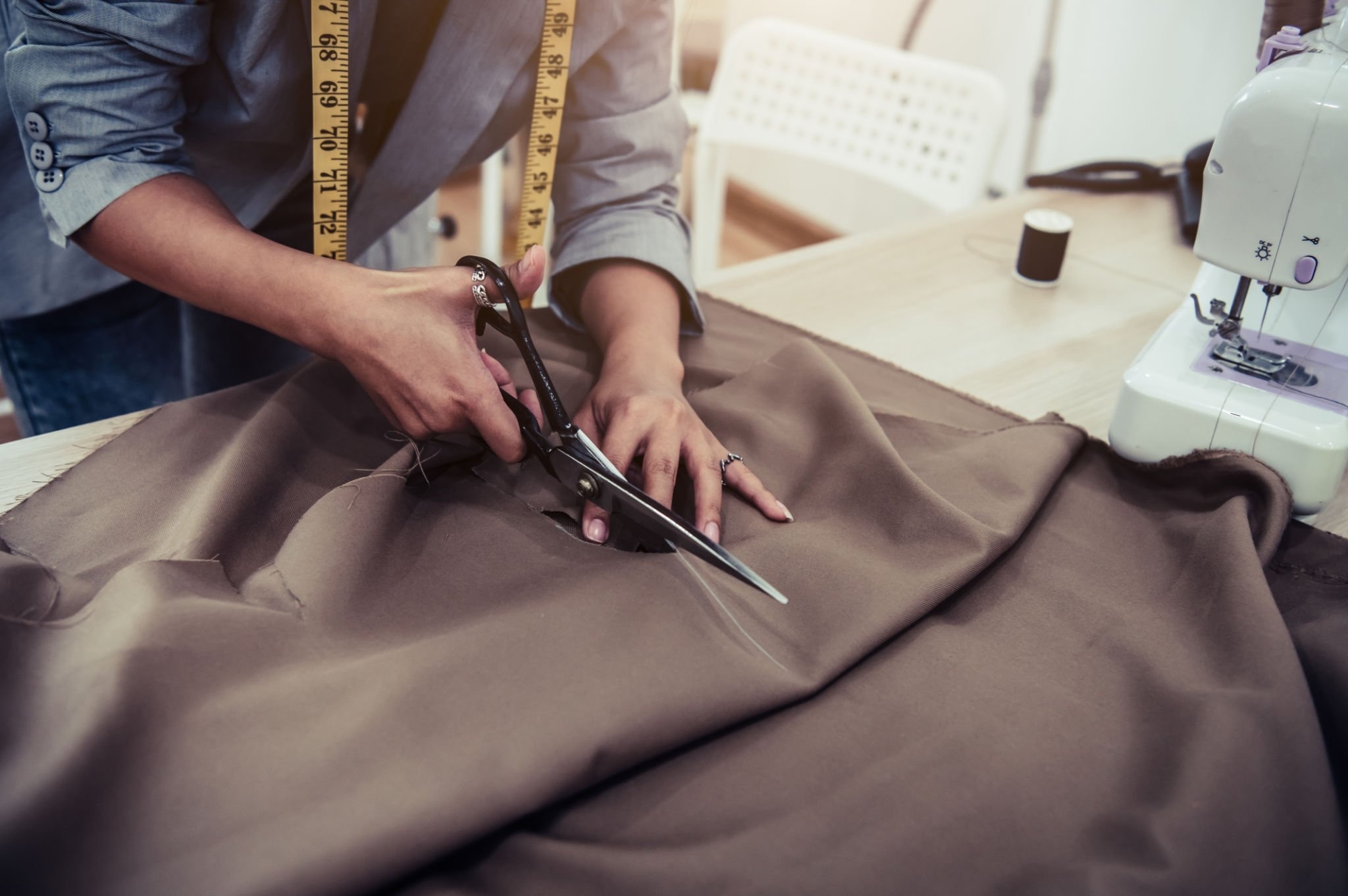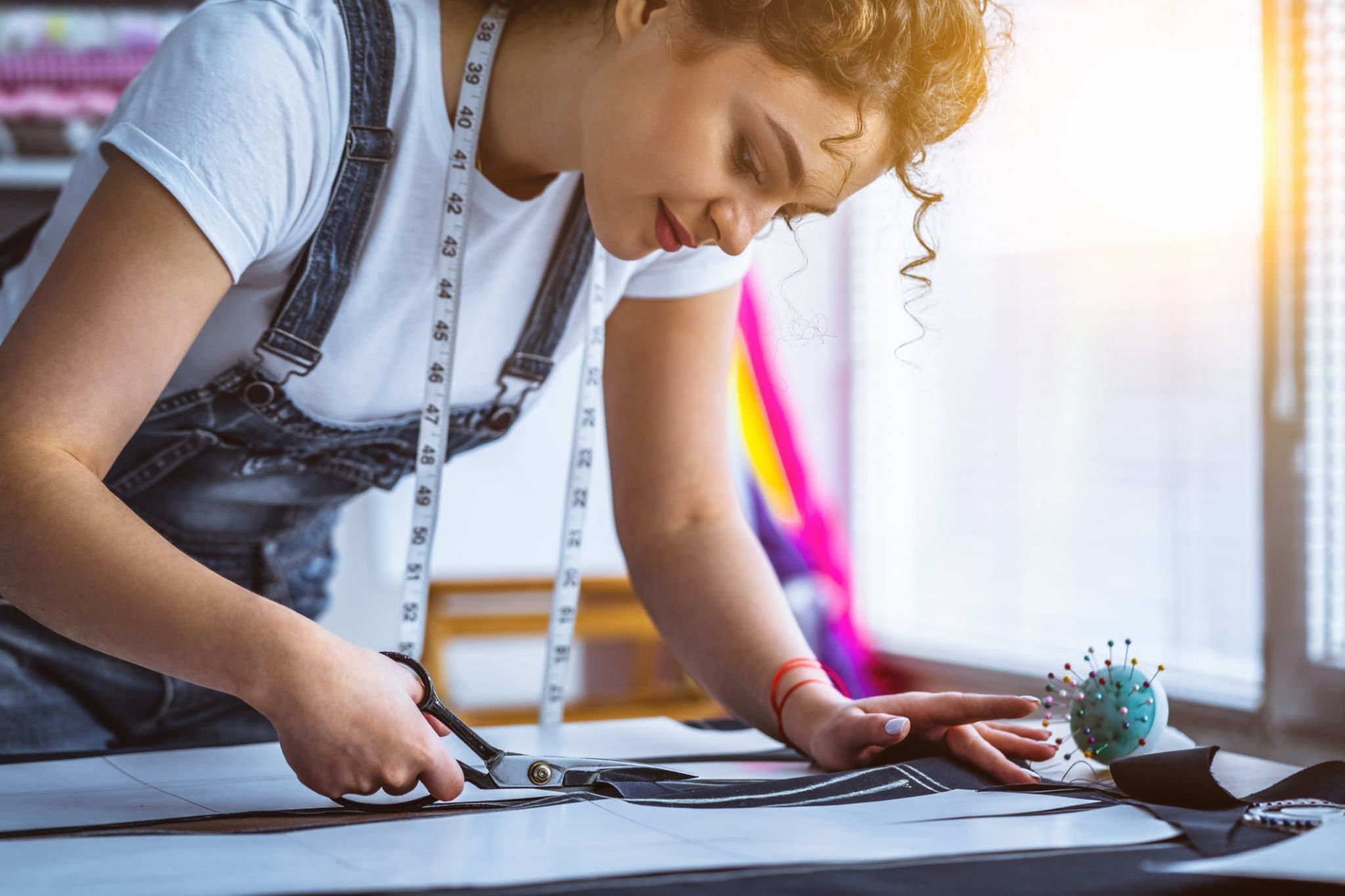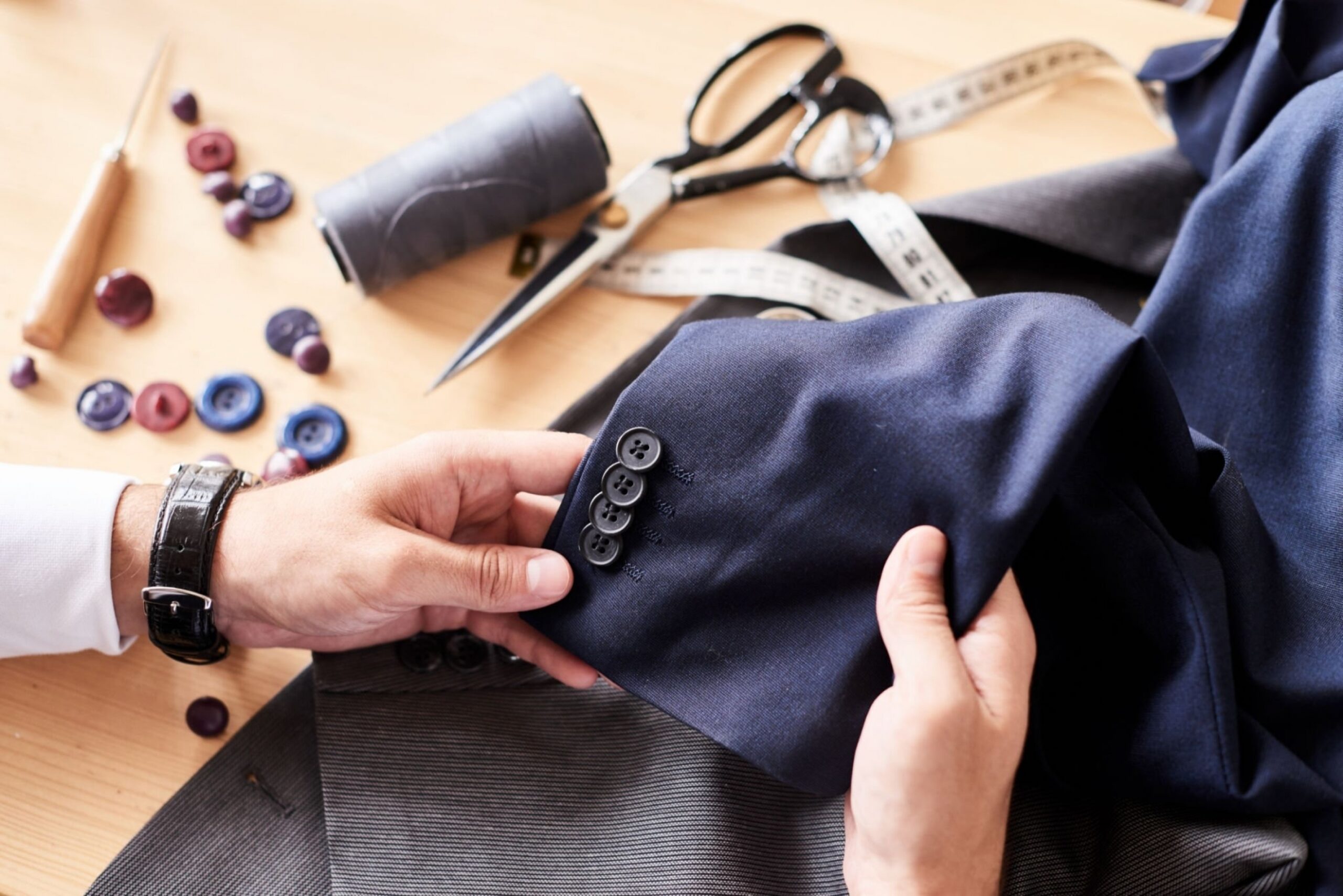Reaching for the perfect fit is an art in itself. Finding the perfect garment can be daunting, especially if you’re a plus-size lady. It’s not easy finding the right size and design of garment that flatters your figure without making you look frumpy or sticking out like a sore thumb. Plus, most garments designed for plus-size women are not as comfortable as they could be and usually have extra padding.
In this blog, we’ll tell you everything you need to know about trimming on clothes: what they are and their functional significance. We shall also touch upon zipper types available in the market and ideal pairings with different trimmings to get the best look possible. We’ve got you covered if you’re looking to flaunt your curves without compromising on style or comfort.

trimming on clothes are accessories that add colour, style, and protection. They make clothes more comfortable by making them more flexible and fluid. Trimmings can also add insulation and moisture resistance to garments. A sewing thread of trimming can also make the garment more secure. Besides, sewing thread is used to attach the trim to the garment. Hence, sewing thread is vital for fashioning accessories on garments.
Various trimmings are available, ranging from decorative sequins to embroideries, beads, lace, ribbons, etc. Fashion designers must be familiar with various trimmings to create cute accessories for their clothing line.
Label and Motif:
- How to start a fashion consultant businessFashion is about expressing yourself, and what better way to do that than through clothes? Whether you are a designer, blogger, business owner, or fashion enthusiast, you may have thought… Read more: How to start a fashion consultant business
- 7 Steps to Import Fashion bulk Clothing from ChinaWhen it comes to sourcing clothes from China, you’d be surprised that the country is the largest clothing supplier in the world. It is a country of fashion with good… Read more: 7 Steps to Import Fashion bulk Clothing from China
- How to find China clothing manufacturer (Tips and strategies)When you decide who to manufacture clothing from, you will do well to consider sourcing raw materials from China. There are many reasons for this—and the main one is cost.… Read more: How to find China clothing manufacturer (Tips and strategies)
- How to write a business fashion planIt is no wonder fashion is an industry with constant innovation. It is a business that requires constant research and development to stay on the top of the mind of… Read more: How to write a business fashion plan
- Skills to help you succeed as a fashion consultantIf you’re interested in becoming a fashion consultant, developing the skills above is essential. A strong understanding of fashion trends and popular styles will help you identify what is trending… Read more: Skills to help you succeed as a fashion consultant
- The competitive advantage of Vietnam clothing manufacturersVietnam is one of the fastest-growing apparel industries in the world. This industry has been on an upward trajectory since 2010, and it’s expected to grow further in the years… Read more: The competitive advantage of Vietnam clothing manufacturers
In garment making, trimming is an essential part of the process. Trimming can be used to add a decorative edge to the garment, or it can be used to make a unique look. Different types of labels and motif trimming techniques are used in garment making. Namely, labelling trimming involves adding a decorative edge using sewing threads. In contrast, sewing threads are also used for sewing the fabric together. On the other hand, sewing threads are used as a decorative trim on garments.
Another popular type of trimming is sewing motifs. Sewing motifs are different shapes and sizes sewn onto garments by hand or machine. Sewing motifs provide a decorative touch to garments. Sewing motifs are also known as finishing stitches or basting stitches.
Apart from sewing, there are other methods of trimming, such as sewing thread braid and lace trimming. Additionally, embroidery can also be used as a form of trimming for apparel and accessories.
Trimming adds finishing touches to apparel and helps create unique looks for outfits. Thus, it is essential in garment making and should not be overlooked by designers or seamstresses.
Zipper:
While there are various types of zippers, a good zipper is strong and durable. This means the teeth of the zipper should be spaced evenly so that it does not jam or catch. Also, the zipper should be properly lubricated to avoid friction and wear. A seamstress or tailor can help with any zipper problems you may have, as they know how to fix them properly.
When using a zipper, double-check the length before using it. This will prevent problems from arising in the future. Another tip is to read the instructions on using a particular zipper before using it. Doing so will ensure you get the most out of your zippers and can use them easily and effectively.
Button:
Trimming buttons is an important function in the garment industry. Those involved in this process use various types of trimming machines and trimming machines to trim the edges of the garment. There are various types of trimmers, ranging from hand trimmers to sewing machine trimmers. Hand trimmers are easy to use but may not be as precise as sewing machine trimmers. They can easily trim both large and small areas of the garment, while sewing machine trimmers are more precise and can easily trim all sizes.
Trimming buttons can be done by hand or with a machine. However, it is important to note that different types of machines are available for different tasks. When choosing a trimming machine, it’s important to consider the fabric the garment is made of and its desired look.
Sewing thread:
Different types of sewing thread are available, each with its unique functionalities. However, it is important to know the different types of sewing thread and their functions before choosing one. Different types of sewing thread come in various thicknesses and strengths. To help you choose the best sewing thread for a sewing task, consider the type of fabric and sewing machine you are using. Different types of sewing thread are best for different sewing tasks, such as sewing woven fabrics on a sewing machine or sewing Velcro onto fabric.
Thread types can be classified according to their basis weight. Sewing threads with heavier bases can be used when sewing heavier fabrics such as denim or canvas, while thinner needles can be used for sewing lighter fabrics such as polyester or silk. Additionally, different types of sewing thread have different fibres and lengths. You should always store sewing thread in a cool and dry place to prevent it from becoming tangled or damaged. Most importantly, never expose sewing thread to direct sunlight or extreme heat, as this could damage the fibres and cause the stitching to break apart.
Interlining:
Trimming interlining is an important step in the manufacturing of garments. It helps improve the quality of a garment and keeps it from becoming wrinkled. Interlining also prevents the fabric from coming loose from the garment and becoming a nuisance. But proper trimming of interlining can result in a decrease in fabric waste. Improper trimming of interlining can lead to wrinkles in the garment and a decrease in garment quality. So, it’s vital that interlining be trimmed correctly to ensure high-quality garments are made and to reduce waste.
Lining:
The lining is an important trimming in garments that helps them look neat, tidy, and elegant. Different lining types can be used in garments such as undergarments, blouses, and skirts. Different types of lining help in keeping the garment moisture-resistant and comfortable. The lining also helps to create different effects on the garment, such as a sexy or sophisticated look. Different lining types can be purchased in different colours and styles to match your outfit. So, it’s essential to consider the type of lining when planning your outfit for any special occasion. Besides, different types of lining can be used to create different effects on the garment, such as a feminine or boho look. Thus, the lining is vital to make your outfit look perfect and stylish.
Hook and Loop fastening:
According to the National Hook and Loop Association, “hook and loop” refers to a closure system featuring two pieces of fabric with elastic edges. These edges are sewn together and usually bear a printed or woven label that provides details about the product. The pieces of fabric are then joined by a loop piece, typically made of plastic or elasticized material. This closure system can be used for various purposes, such as sewing accessories onto garments, attaching patches to clothing, and closing zipper pulls.
The NHA states that hook and loop fasteners are versatile and easy to use. They provide a secure fit without requiring much effort on the wearer’s part. Additionally, they are quick to apply and can be easily removed without leaving any residue or damage to the garment.
Hook and loop fasteners provide an improved fit compared to traditional closures because they don’t require sewing or hemming around the edges of the garment. They also allow easy adjustments by opening or closing the loop with a finger or object.
A benefit of hook and loop fasteners is that they can easily adjust to different fabric thicknesses. As a result, they can be used on garments of varying sizes and shapes, making them an ideal choice for consumers looking for a convenient way to close clothes.
In summary, hook and loop fasteners are popular among apparel manufacturers due to their versatility and ease of use. They have become essential in various industries, making them an important part of many types of garments.
Lace braid and Elastic:
Lace braid and elastic trimming add an elegant touch to your garments. These trimmings can be used to add shape and definition to your garments. They also provide a comfortable and snug fit to your clothes. The material of lace braid and elastic trimming varies, with the former being more durable than the latter. You can use lace braid and elastic trimming in different colours, textures, and designs to add an extra layer of elegance to your wardrobe. It is important to note that lace braid and elastic trimming are available in various sizes, depending on the purpose. Thus, you can choose the one that best suits your garment. Besides, you can also try different types of lace braids and elastic trimming for an added style feature to your outfits.
Wadding:
Wadding is an important component of garments because it helps maintain shape and prevents the garment from becoming wrinkled or baggy. Wadding is used in different types of clothing, such as wool, cotton, rayon, and silk. The type of wadding and its thickness affect the comfort and durability of the garment. It is important to check the quality of the wadding before purchasing to ensure that it meets your specific needs. Also, it is vital to carefully inspect the garment after sewing to check for any stray pieces of wadding or other materials that may have accidentally been left behind during production. If you notice any inconsistencies with the garment’s specifications, you should not hesitate to send it back for a replacement.
Shoulder pad:
– Shoulder pads are an essential part of garments and protect the shoulder from wear and tear. They help to correct any deficiencies in the shoulder area and improve the overall appearance of the garment.
– Shoulder pads should be made from a soft, comfortable fabric that will not cause irritation or discomfort.
– A shoulder pad should be proportional to the size of the person’s shoulders. A shoulder pad should be fitted so that it does not move around when the person is wearing the garment.
– Shoulder pads can be made from various materials, including cotton, wool, and silk.
– Shoulder pads can be plain or embellished with different designs or patterns.
The types of shoulder pads and their uses vary depending on the fashion and type of garment. However, always ensure you fit the shoulder pad properly to ensure comfort during wear.
Conclusion
Whether it is an outfit for the day or a special occasion, trimming on clothes are essential. They can be used to style and alter the garment per your requirements. Besides allowing you to alter the garment to fit your body shape, they also help make the garment more comfortable and enhance its overall look. Thus, you must use them when designing or altering any garment. You can learn more about trimming on clothes by reading this blog.




